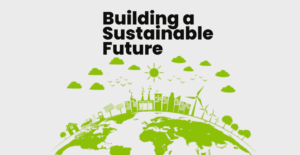Singapore’s Bold Path to Net-Zero: Innovative Strategies for a Sustainable Future
Singapore is implementing a multi-faceted strategy to achieve net-zero emissions by 2050, focusing on policy reforms, private sector engagement, and sector-specific decarbonization. Despite limited renewable energy options, it prioritizes R&D, carbon capture, and international cooperation. Key efforts include a $5 billion Future Energy Fund, increased solar energy capacity, and progressive carbon taxation. The aviation and maritime sectors are advancing green initiatives through alternative fuels and digital shipping corridors. Singapore’s holistic approach fosters innovation, sustainability, and global collaboration in climate action.

Singapore’s Bold Path to Net-Zero: Innovative Strategies for a Sustainable Future
Singapore is taking a comprehensive approach to climate mitigation, aiming to reach net-zero emissions by 2050 despite its limited access to alternative energy sources. With the global target of reducing greenhouse gas emissions by 60% by 2035 to keep warming below 1.5°C, the city-state is implementing a range of strategies, including setting mitigation policies, engaging the private sector, and addressing emissions in hard-to-abate sectors. Singapore has committed to peaking its emissions by 2028, two years earlier than initially planned, and achieving net-zero by 2050, as outlined in its first biennial transparency report at COP29.
Recognizing its geographic and resource constraints, Singapore prioritizes research and development (R&D) and test-bedding of low-carbon technologies such as hydrogen and carbon capture while relying on international cooperation for carbon credits and renewable energy imports.
A key element of Singapore’s climate action plan is systematic decarbonization across major sectors, overseen by the National Climate Change Secretariat (NCCS). Its strategy focuses on business transformation, investment in low-carbon technologies, international collaboration, and the promotion of sustainable practices. Power generation, which contributes 40% of Singapore’s emissions, is a top priority, with plans to import 30% of its electricity from low-carbon sources by 2035 and a $5 billion Future Energy Fund allocated for infrastructure development.
Solar energy is also a focus, with a goal of generating 2 gigawatts by 2030 through initiatives like the SolarNova Programme. Beyond energy, emissions reduction efforts extend to industries such as transport, buildings, waste management, and water, with a carbon tax framework reinforcing Singapore’s low-carbon transition.
Recognizing the importance of private sector participation, Singapore has developed a supportive business environment that includes financial incentives, carbon pricing mechanisms, and capacity-building initiatives. The country has built a growing carbon services ecosystem with over 140 firms offering advisory, accounting, and offsetting solutions. To further strengthen this sector, Singapore’s Economic Development Board (EDB) launched the Carbon Project Development Grant at COP29, helping local firms finance and develop high-quality carbon credit projects under Article 6 of the Paris Agreement.
Various grants, such as the Resource Efficiency Grant for Energy (REG(E)), also support companies in implementing energy-efficient technologies. Additionally, Singapore was the first ASEAN country to introduce a carbon tax in 2019, progressively increasing the rate from S$5/tCO2e to S$25/tCO2e in 2024, with a planned rise to S$50-S$80/tCO2e by 2030. Under the International Carbon Credit (ICC) Framework, businesses can offset up to 5% of their tax liabilities using carbon credits, with agreements already in place with countries such as Ghana and Papua New Guinea.
Singapore is also focusing on decarbonizing its aviation and maritime sectors, which are crucial to its economy but pose unique challenges due to their reliance on high-energy-density fuels. The Civil Aviation Authority of Singapore (CAAS) has introduced the Sustainable Air Hub Blueprint, outlining measures to transition towards low-emission aviation fuels and technologies. Meanwhile, the Maritime and Port Authority of Singapore (MPA) is driving maritime decarbonization through initiatives such as Green and Digital Shipping Corridors (GDSCs), which involve collaborations with key ports in Australia, Japan, the U.S., the Netherlands, and China to develop alternative fuel supply chains and scale green shipping projects.
MPA is also investing in the adoption of alternative marine fuels like methanol and ammonia while establishing the Maritime Energy Training Facility (METF) to train professionals in operating vessels with clean marine fuels. These efforts are further supported by global partnerships with organizations like the International Energy Agency (IEA) and the International Renewable Energy Agency (IRENA) to accelerate the energy transition.
Singapore’s climate strategy is built on policy reform, business incentives, sectoral decarbonization, and international partnerships, reinforcing its position as a leader in sustainable development. Through innovation and collaboration, the country is creating an enabling ecosystem for a low-carbon future, demonstrating that even resource-limited nations can take meaningful action toward global climate goals.
Check out TimesWordle.com for all the latest news
You must be logged in to post a comment.